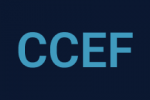By Kelly Ye, CFA, Director of Research, IndexIQ
The latest predictions now call for the wave of COVID-19 infections to peak in the U.S. anywhere from mid- to late April. Our greatest hope is obviously that the peak arrives much sooner rather than later, but of course these are just predictions, and so far, everything we’ve seen has highlighted that we are living through a time of great unpredictability. Still, the spread will eventually start to slow and as that becomes apparent, the markets will react.
But will that reaction presage a return to business as usual? In our view, probably not for a while. Returning to something resembling normalcy in the way we work, the way we live, the way our kids learn, and so much more, will take time and during that period of wait and see, investors will have an opportunity to reconsider their investment strategies.
Three broad lessons are emerging – exogenous events can drive dramatic shifts in market sentiment and performance in a very short period of time; these events cannot be reliably anticipated; and diversification, including an allocation to liquid alternatives, can help.
Crises create volatility and that, in turn, can drive investors to act in ways that are contrary to their best long-term interests. That has always been the case. Over the last few decades, new investment theories and products have been developed to try and provide a better understanding of investor behavior, and tools have been introduced, designed to help investors manage through times of turmoil.
Behavioral economics, for example, tries to explain why we do what we do, and we would be willing to wager that the vast majority of people reading this have sat through more than one presentation that included a certain Mike Tyson quote about plans and punches to the face which we won’t repeat again here.
In the investing world, liquid alternatives were introduced to provide a tool for gaining diversification and managing the kind of volatility that tends to exacerbate many of the most negative investor behaviors.
These two trends have evolved side-by-side. Over the past decade, the science has become better established and, at the same time, many of the issues that prevented widespread access to alternatives have been resolved, a fortunate confluence of events from an investor’s perspective. The first liquid alternative ETF entered the market on March 25, 2009 – the IQ Hedge Multi-Strategy Tracker (QAI) – based on an index with an inception date of September 15, 2008. It offered transparency, liquidity, and low cost and came with none of the net worth requirements and concerns over manager variability that dogged typical hedge fund investments. Many others have followed, providing access to a broad range of strategies and asset class exposures.
Behavioral scientists have noted that in good times, investors are inclined to overestimate their tolerance for risk, and that in turn can be reflected in allocation strategies that gradually become less diversified. A sudden drop in the market like the one we have experienced reminds us that we are less rational than we like to think and that loss aversion – the idea that pain of loss is felt more acutely than the joy of gain – is real.
Exogenous events have made diversification a top of mind issue again, but investors looking to address this by adding liquid alternatives should remember that not all liquid alts funds are alike. Many have not been around long enough to have experienced a full market cycle. Many have also proven much more highly correlated than one might expect, meaning they may have gotten the liquid part right, but the alternative part leaves something to be desired.
The period of fear, uncertainty and stomach-churning volatility we’re currently living through will eventually end, delivering us to a changed world. One thing that’s not likely to change much, however: human nature. But the ideas advanced by behavioral scientists offer some hope here: by making us more aware of how and why we behave the way we do, we can use the tools available to us – like liquid alternatives – to be prepared as investors regardless of what the markets bring.
Click on the fund name for the most current fund page, which includes, the prospectus, investment objectives, performance, risk, and other important information. Returns represent past performance which is no guarantee of future results. Current performance may be lower or higher. Investment return and principal value will fluctuate, and shares, when redeemed, may be worth more or less than their original cost. Visit nylinvestments.com/etfs and nylinvestments.com/funds and for the most recent month-end performance.
Past performance is no guarantee of future results, which will vary. All investments are subject to market risk and will fluctuate in value. Diversification cannot assure a profit or protect against loss in a declining market.
This material represents an assessment of the market environment as of a specific date; is subject to change; and is not intended to be a forecast of future events or a guarantee of future results. This information should not be relied upon by the reader as research or investment advice regarding the funds or any issuer or security in particular.
The strategies discussed are strictly for illustrative and educational purposes and are not a recommendation, offer or solicitation to buy or sell any securities or to adopt any investment strategy. There is no guarantee that any strategies discussed will be effective.
This material contains general information only and does not take into account an individual’s financial circumstances. This information should not be relied upon as a primary basis for an investment decision. Rather, an assessment should be made as to whether the information is appropriate in individual circumstances and consideration should be given to talking to a financial advisor before making an investment decision.
“New York Life Investments” is both a service mark, and the common trade name, of certain investment advisors affiliated with New York Life Insurance Company. IndexIQ® is an indirect wholly owned subsidiary of New York Life Investment Management Holdings LLC and serves as the advisor to the IndexIQ ETFs. ALPS Distributors, Inc. (ALPS) is the principal underwriter of the ETFs. NYLIFE Distributors LLC is a distributor of the ETFs. NYLIFE Distributors LLC is located at 30 Hudson Street, Jersey City, NJ 07302. ALPS Distributors, Inc. is not affiliated with NYLIFE Distributors LLC. NYLIFE Distributors LLC is a Member FINRA/SIPC.








